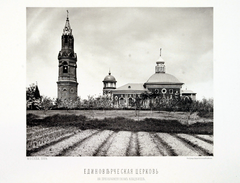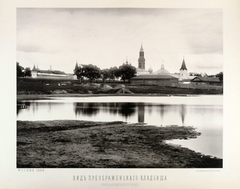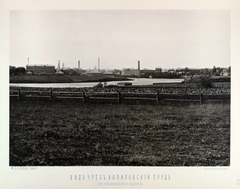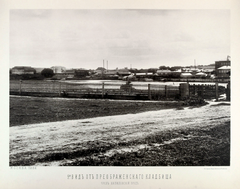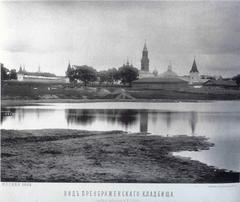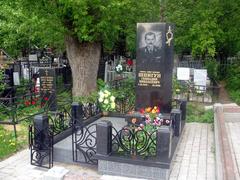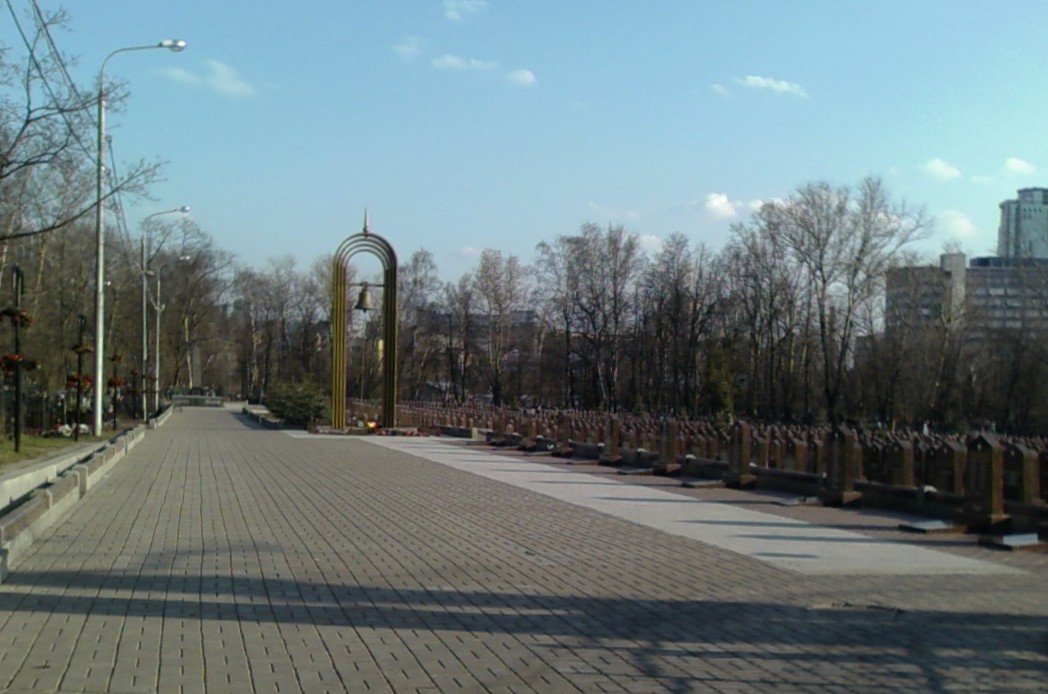
Preobrazhenskoye Cemetery: Visiting Hours, Tickets, and In-Depth Guide to a Moscow Historical Landmark
Date: 14/06/2025
Introduction
Preobrazhenskoye Cemetery in Moscow is a unique historic and spiritual landmark, deeply intertwined with the history of the Old Believer community and Russia’s religious evolution. Established in 1777 during a devastating plague, it became both a burial ground and the spiritual heart of the Fedoseevtsy—one of the largest priestless Old Believer factions. Today, it stands as a testament to Moscow’s religious pluralism, resilience, and architectural heritage, offering visitors a serene environment to explore centuries of cultural and spiritual history.
This comprehensive guide details Preobrazhenskoye Cemetery’s origins, significance, visiting hours, entrance details, and practical tips, ensuring a respectful and enriching experience for all visitors.
Table of Contents
- Historical Background
- The Old Believers and Religious Significance
- Architectural and Cultural Heritage
- Soviet Era and World War II Memorials
- Notable Burials and Memorials
- Visiting Preobrazhenskoye Cemetery: Practical Information
- Visitor Etiquette and Photography
- Frequently Asked Questions (FAQ)
- Conclusion
- Sources and Further Reading
Historical Background
Preobrazhenskoye Cemetery (Преображенское кладбище) was founded in 1777 on Moscow’s then-outskirts, initially serving as a quarantine area during a plague. The land was designated for the Fedoseevtsy, a branch of the Old Believers who had separated from the Russian Orthodox Church in the 17th century in protest against liturgical reforms (placenote.info). This community, persecuted for their faith, used the site not only for burials but also as a clandestine monastic center, establishing both men’s and women’s cloisters.
Over time, the cemetery evolved into the religious and administrative nucleus of the Fedoseevtsy, shaping the spiritual landscape of Moscow’s Old Believer community and fostering a tradition of resilience against state and church pressures.
The Old Believers and Religious Significance
The Old Believers’ schism from the Russian Orthodox Church in the 17th century marked a significant chapter in Russian religious history. The Fedoseevtsy, who rejected the priesthood and certain rituals, sought sanctuary at Preobrazhenskoye. Here, they maintained their traditions, preserved religious texts, and educated future generations (wiki-gateway.eudic.net; sofia42.ru).
The cemetery’s layout—with distinct areas for men’s and women’s monastic communities—reflects its origins as a dual-gender spiritual center. To this day, the women’s section remains under Fedoseevtsy stewardship, having survived Soviet expropriation and religious division.
Architectural and Cultural Heritage
The grounds of Preobrazhenskoye Cemetery are home to several historically significant religious structures, including:
- Assumption Church (1784–1790)
- Church of the Exaltation of the Holy Cross (completed 1811)
- St. Nicholas Monastery
- Bell Tower (1876–79)
These buildings exemplify Old Believer architectural traditions—marked by simplicity, traditional Russian motifs, and the use of Old Church Slavonic inscriptions (sofia42.ru; timenote.info). Secure stone walls and turrets (built in 1806) provided safety and separation from the secular world.
Memorials and gravestones across the grounds feature intricate ironwork, traditional religious iconography, and family vaults, offering a glimpse into the artistry and values of the Old Believer community (Religion Fandom).
Soviet Era and World War II Memorials
After the October Revolution, Preobrazhenskoye Cemetery faced significant changes. Its churches were temporarily seized by the Obnovlentsy—a Soviet-aligned reformist Orthodox group—and many sacred artifacts were transferred to state museums (timenote.info). The grounds were divided by a brick wall between the Pomortsy Old Believers and the official Russian Orthodox Church, a split that physically remains.
A defining feature of the cemetery is Moscow’s first Eternal Flame memorial, established to honor World War II casualties. This tradition, originating here, inspired similar memorials throughout Russia and reinforces the cemetery’s place in national memory (placenote.info).
Notable Burials and Memorials
Preobrazhenskoye Cemetery is the final resting place for key figures in Old Believer history, including religious leaders, philanthropists, and cultural icons. Notable burials include members of the Abramov family and influential merchants who supported the community’s spiritual and social life (BillionGraves). Memorials are adorned with traditional inscriptions and religious motifs, symbolizing the enduring faith of the community.
The cemetery’s division into areas for different Old Believer groups and official Orthodox burials reflects Moscow’s long-standing religious diversity.
Visiting Preobrazhenskoye Cemetery: Practical Information
Visiting Hours
- Open daily: 9:00 AM to 6:00 PM
- Note: Hours may vary on public holidays. Always check local listings or contact the cemetery for up-to-date information.
Entrance and Tickets
- Admission: Free
- Guided tours/special events: May require tickets; verify with local tour operators or community organizations (Rusmania).
Accessibility
- Main paths are paved and accessible for most visitors, but some older sections have uneven surfaces.
- No dedicated visitor center or extensive facilities; plan ahead for restrooms and refreshments.
Getting There
- Address: 25 Preobrazhensky Val St, Preobrazhenskoye District, Moscow
- Metro: Preobrazhenskaya Ploshchad (Line 1, Red Line) is a 10-minute walk away.
- Bus: Several routes serve the area—check local transit schedules.
- Car: Limited parking; public transport is recommended (Yandex Maps).
Best Times to Visit
- Spring and early autumn: Pleasant weather and scenic grounds.
- Weekdays: Less crowded.
- Religious holidays and Victory Day: Special events but higher visitation.
Guided Tours and Events
- Tours focusing on Old Believer heritage and cemetery architecture are available through local organizations. Book in advance where possible.
- Religious festivals and commemorations take place throughout the year; check with the cemetery or community for schedules.
Nearby Attractions
- Rogozhskoe Cemetery: Another major Old Believer site.
- Izmailovo Kremlin and Market
- The State Historical Museum
Visitor Etiquette and Photography
- Dress modestly, especially in chapels: women should cover heads and shoulders; men should remove hats indoors (Rusmania).
- Remain quiet and respectful, particularly during services or ceremonies.
- Photography is allowed outdoors, but avoid photographing mourners or active religious services without permission. Some chapels may restrict photography—observe posted signs.
Prohibited activities include alcohol consumption, picnicking, loud music, littering, bringing pets (except service animals), and commercial filming without authorization.
Frequently Asked Questions (FAQ)
Is there an entrance fee to Preobrazhenskoye Cemetery?
No, entrance is free.
What are the visiting hours?
Generally 9:00 AM to 6:00 PM daily. Check ahead for holiday changes.
Are guided tours available?
Yes, through local Old Believer organizations and cultural centers. Advance booking is advised.
Is the cemetery accessible for people with mobility challenges?
Main paths are accessible, but some historic sections have uneven ground.
Can I take photographs inside the cemetery?
Outdoor photography is permitted; restrictions may apply inside chapels or during services.
Are there facilities on site?
Facilities are limited; plan accordingly for restrooms and refreshments.
What else can I visit nearby?
Rogozhskoe Cemetery, Izmailovo Kremlin, and other historical sites in eastern Moscow.
Conclusion
Preobrazhenskoye Cemetery stands as a powerful symbol of Moscow’s religious diversity, historical endurance, and cultural richness. Its connections to the Old Believer movement, unique architecture, and important memorials—especially the Eternal Flame—offer visitors a profound understanding of Russian spiritual and social history. By observing respectful conduct and utilizing available resources, visitors can experience a meaningful journey through one of Moscow’s most significant heritage sites.
For enhanced exploration, consider using the BillionGraves database and virtual maps. Download the Audiala app for guided experiences, and follow us on social media for more updates on Moscow’s historical sites.
Sources and Further Reading
- placenote.info
- sofia42.ru
- Religion Fandom
- BillionGraves
- Rusmania
- Wikipedia
- Wikimedia Commons
- timenote.info
- wiki-gateway.eudic.net
- Yandex Maps
- AroundUs

